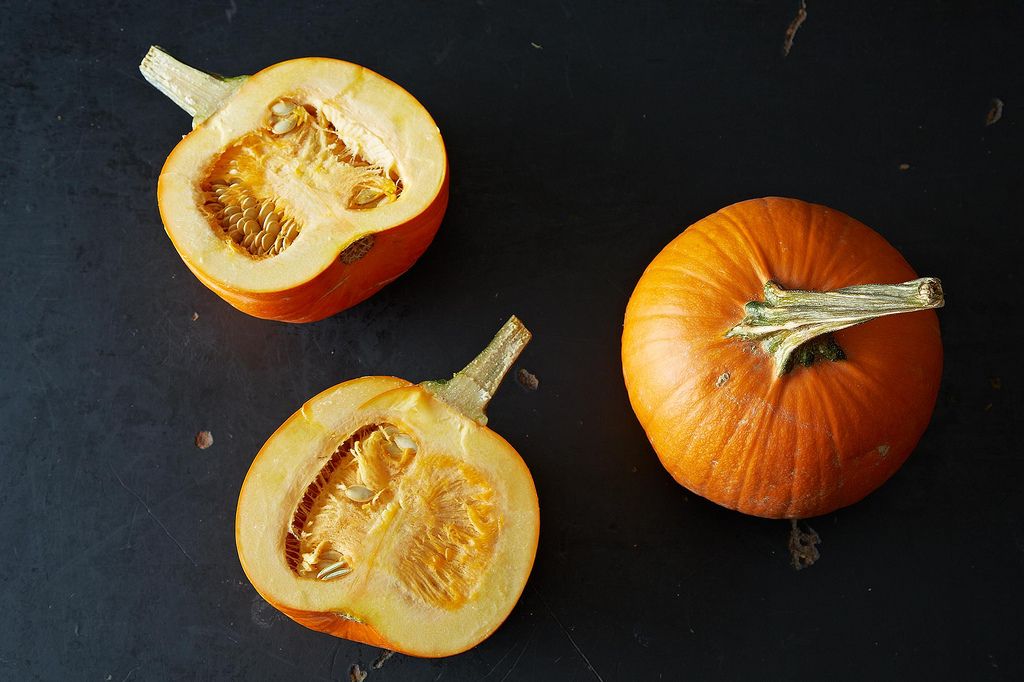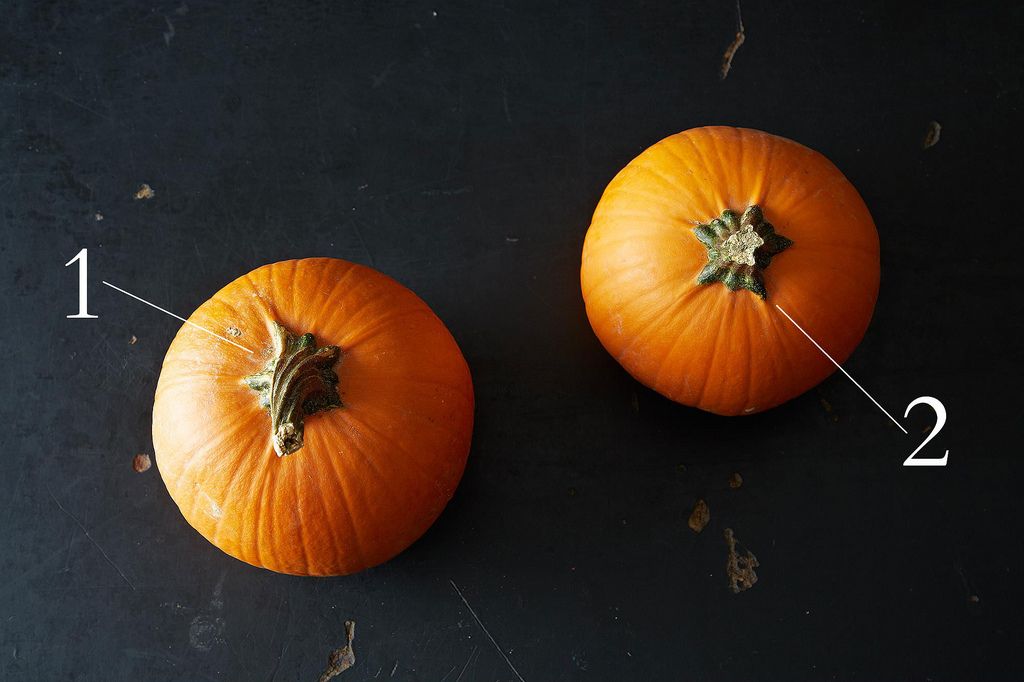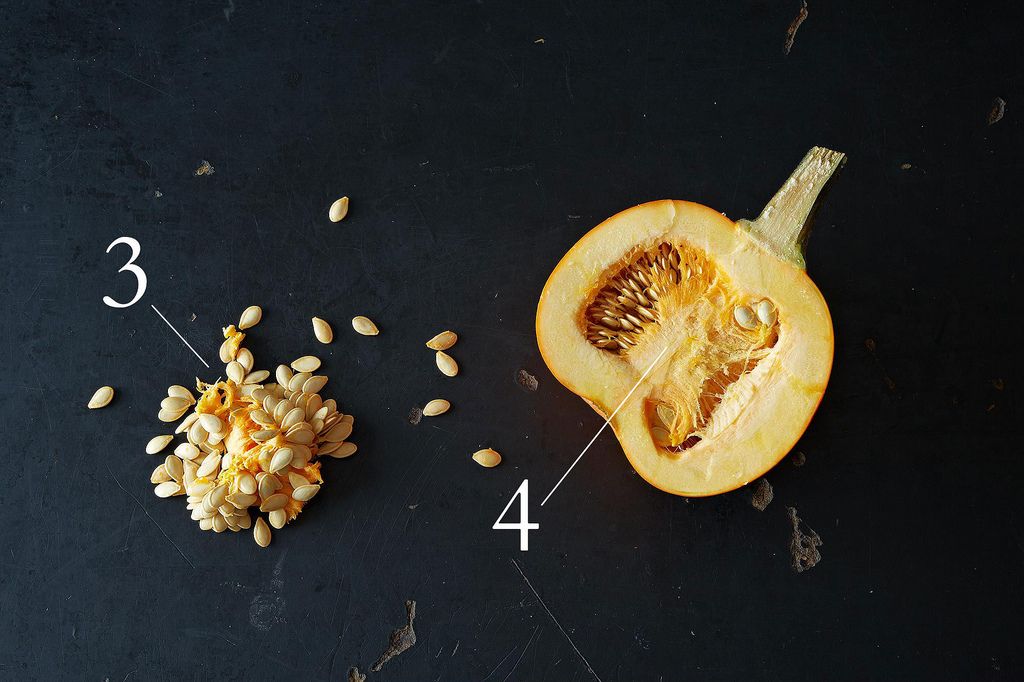Every week we get Down & Dirty, in which we break down our favorite unique seasonal fruits, vegetables, and more.
Today: Get ready to pick your perfect pumpkin (for carving or eating), and then make the most of it -- guts and all.

When you hear the word pumpkin you probably think of a large, round orange specimen ready for carving, but any large hard-skinned squash could be called a pumpkin -- there’s no botanical distinction. Not only is Cinderella's carriage a fruit, but pumpkins are actually a special type of berry: a pepo -- a term reserved mainly for the cucurbit fruits.
And while we’re smashing pumpkin illusions, canned pumpkin purée is likely made with other types of winter squash, like butternut, rather than one destined for jack-o'-lantern greatness. (Make your own pumpkin purée with a sugar pie pumpkin and revel in the your resulting sweeter and nuttier -- and authentic -- pumpkin pie.) Don’t worry, we won't crush anyone's belief in the Great Pumpkin.
More: The original jack-o'-lanterns were turnips. Get out your tiny carving tools.

Even without a precise scientific definition, there are still a large number of winter squashes that are commonly identified as pumpkins. Some are perfect for carving, others are best for eating, and some work for both. If you still have some carving to do, choose a heavy pumpkin with an inch or two of stem (1), as it will last longer than those with less (2). A thick stem tips you off to a thick pumpkin wall, perfect for going crazy with your unlikely carving tools.
Choosing a pumpkin to eat? Talk to your local farmers at the market about the best varieties for your dish and follow Elizabeth Schneider's guidelines: choose a rock-hard specimen (if you can scratch it with your fingernail it's too young), and if it has a light patch from where it was growing on the soil, the patch should be a warm yellow or orange color rather than greenish. Whether you plan to carve or eat your pumpkin, leave behind any pumpkins with bruises or soft spots.

Regardless of what you're doing with your pumpkin, don’t toss the seeds (3)! Make an entire meal around pumpkin seeds; they're perfect on a salad, in a tart crust, blended into a dip or pesto, or in some pumpkin seed brittle. Not into eating pumpkin seeds? (Are you sure? You don’t even need a recipe to roast them.) Deborah Madison recommends putting pumpkin guts (4) (the seeds and the fibers) to use by making stock. This works even if you already roasted your pumpkin, too -- just add the cooked skin! Let’s toast to finding your perfect pumpkin with a big glass of pumpkin juice, and enjoy pumpkin dishes long past Halloween:
Friday: Lentil and Roasted Pumpkin Salad with Tahini Dill Dressing
Saturday: Pumpkin Baked Oatmeal with Brandied Cranberries and White Chocolate
Sunday: Pumpkin Orange Cinnamon Rolls with Chocolate Chips
Monday: Pumpkin Spice Cashew Cheese
Tuesday: Roasted Pumpkin Red Lentil SoupWednesday: Ginger Molasses Pumpkin Bread
Thursday: Pumpkin Mashed Potatoes with Fennel and Spinach
Photos by James Ransom
See what other Food52 readers are saying.